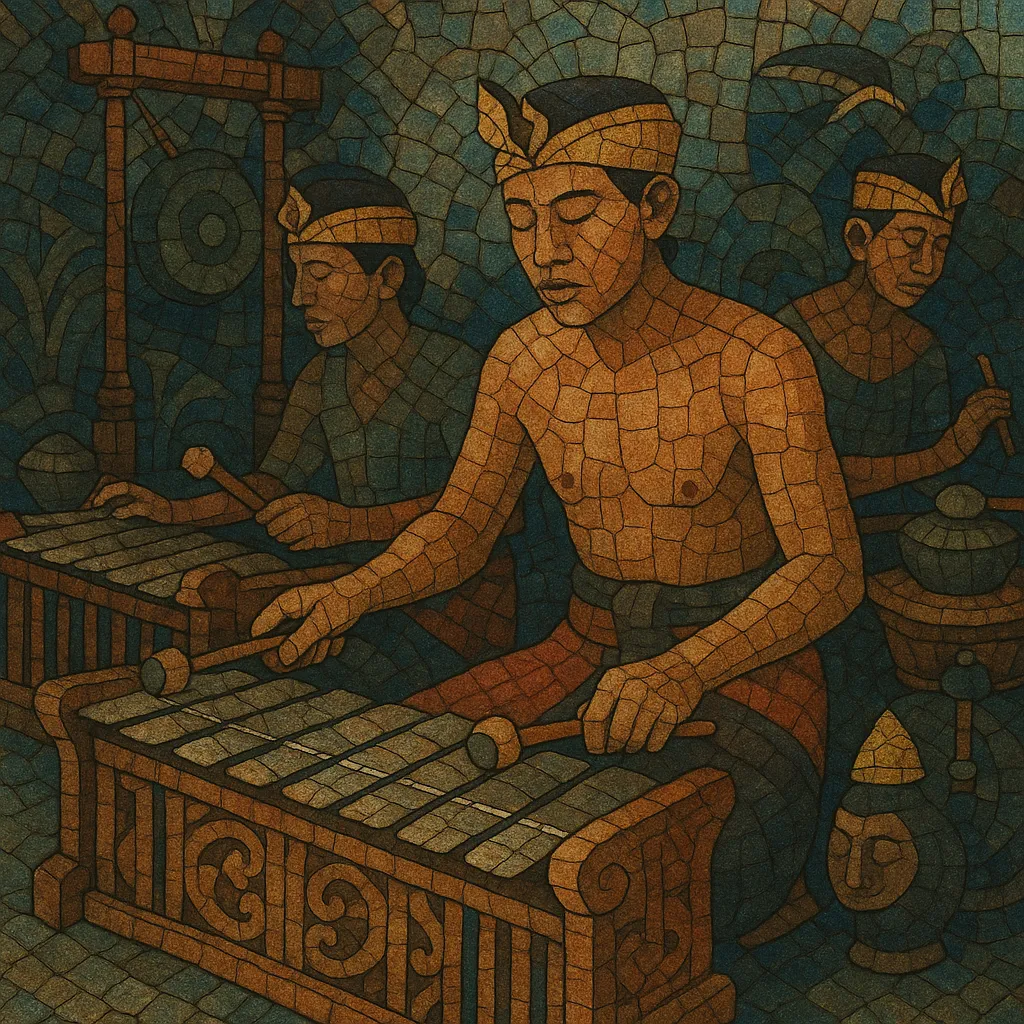Gamelan selonding is an ancient Balinese sacred ensemble characterized by iron-keyed metallophones that produce a bright yet austere timbre. Originating in Bali Aga (pre-Majapahit) communities—most famously in Tenganan Pegringsingan—it is performed primarily for ritual and ceremonial contexts rather than entertainment.
The music typically employs a seven-tone (saih pitu) pelog-based tuning system and features interlocking (kotekan) textures, a cyclical sense of time, and colotomic punctuation. Ensembles are relatively small and intimate, with iron bar instruments suspended over resonators, supported by a timekeeper (kajar/kempli) and, in some lineages, small gongs. The result is a dignified, archaic sonic atmosphere closely tied to local cosmology and calendrical rites.
Gamelan selonding is widely associated with Bali Aga villages, communities that preserve cultural practices predating the 14th‑century Majapahit influence. The ensemble’s iron-key construction and sacred function link it to very old ritual strata, with music performed for temple ceremonies, lifecycle events, and calendrical festivals such as those in Tenganan Pegringsingan.
Unlike courtly or theatrical gamelan, selonding’s primary home is the temple courtyard. Its seven-tone pelog-derived tuning (saih pitu) and interlocking kotekan produce shimmering textures, while a steady timekeeper (kajar/kempli) articulates cycles. The repertoire (tabuh/tabuh selonding) is transmitted orally, embedding mythic narratives and communal memory in its patterns.
Through Dutch colonial presence and 20th‑century social changes, selonding persisted in pockets of eastern Bali (especially Karangasem). While newer Balinese genres (like gong kebyar) rose to prominence, selonding remained vital in its ritual sphere, performed by designated village ensembles (sekehe) with strict ceremonial protocols.
In the late 20th century, cultural organizations, scholars, and Bali-based arts institutes documented and revitalized selonding practice. Some ensembles began concert presentations for cultural exchange, while maintaining ritual primacy at home. Today, selonding stands as a living archive of Bali’s pre-court musical heritage and a touchstone for contemporary Balinese identity and pedagogy.


